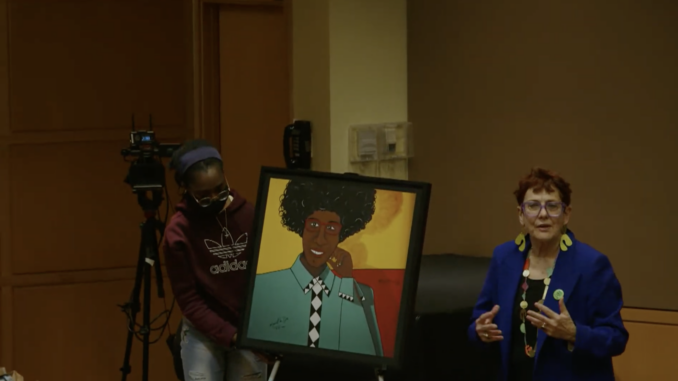
By Paulina Gajewski
The Wolfe Institute held its fifth event in a series of celebrations of recent books published by Brooklyn College faculty on Thursday, Nov. 2. Barbara Winslow, former professor of secondary education and women’s and gender studies at BC, tackles the issue of portrayal of feminist movements in her new book, “Revolutionary Feminists: The Women’s Liberation Movement in Seattle.”
Various feminist movements of the nineteenth and twentieth centuries conjure images of a certain type of woman advocating for women’s rights. This may include figures such as Susan B. Anthony, Elizabeth Cady Stanton, and Sojourner Truth, as well as extending to celebrities and political figures of the present world. In recent years, historians and women’s rights activists have aimed to study the nuances of feminism and its figures, and the ways in which it has transformed over time.
Prudence Cumberbatch, chair of the Africana Studies Department at BC, introduced the author of the book. Winslow entered BC as a professor in 1996 and retired in 2013, and spent her time teaching and coordinating various women’s and gender studies programs. She has written a variety of books, one of which is a biography of Shirley Chisholm, the first Black woman to be elected to Congress, who also attended Brooklyn College.
Distinguished Political Science Professor Jeanne Theoharis led the conversation with questions and her complementing insights into the history behind the book. Her work on civil rights helped provide nuance into the intersectionality of feminist movements.
Winslow lived in Seattle from 1967 to 1973. At the beginning of the conversation, she introduced a plethora of movements she had been involved in, most of which were staunchly related to the efforts of the soon-to-be women’s liberation movement in Seattle. Winslow differentiated this from the women’s movement, which was mainstream feminism, often characterized by bourgeois members. The women’s liberation movement, on the other hand, was “anti-capitalist, anti-racist, and anti-imperialist. It wanted more than women’s rights. It wanted a total destruction of the patriarchal system,” as Winslow characterized it during the talk.
Winslow’s objective with “Revolutionary Feminists” was to not only bring light to the movement, but to also bring light to her grievances with the way women’s liberation movements have been presented. They have often been depicted as adhering to misandry and being composed of all white women. Both, as Winslow attempts to tackle in her book, are false prejudices.
The importance of local histories is the backbone of the book. “By focusing on local histories in cities that have larger populations of people of color,” Winslow said, “ it introduces us to a larger cast of feminists.”
She continued by introducing a few outstanding figures from her book. The first, Fannie Lou Hamer, was a civil rights activist. In 1969, she spoke at an event hosted by the women’s liberation in Seattle, where she was a catalyst for stopping the issue of forced sterilization amongst women of color. In 1961, Hamer underwent surgery for removal of a fibroid, and years later, was given a hysterectomy without her knowledge. This was a historical trend for marginalized women that many white people were unaware of.
Nina Harding, too, was an African-American woman who Winslow highlighted. Coming from a middle-class background, she had moved to Seattle, where she wrote outright about her experience of getting an abortion. Harding helped to form a number of African-American and women-of-color groups at the University of Washington.
Winslow had to tackle the ways in which her background informed her research and books. She came from a school in which there was not a single professor of color, and no courses dealt with the concept of race. The population of where she lived was 94% white and exhibited racial cluelessness. Looking into the local histories, Black and Latinx women played foundational and fundamental roles in founding the first women’s liberation groups.
“In a sense,” Winslow recounted, “before Kimberlé Crenshaw defined the word intersectional, we were involved in intersectional politics.” The women’s liberation of Seattle was made up of several coalitions, including women of the Black Panthers and domestic workers of America. The movement aimed to recenter socialist feminism and move away from the ideas of the mainstream women’s movement.
On a final note, Winslow exemplified the importance of how change is made. The revolutionary feminists of the past paved the way for future change, beginning locally. “The women’s and gender studies programs didn’t start because the BC president and administration thought it was a good idea,” Winslow said. “It started because people like yourself fought, struggled, demonstrated, and sat in.”
